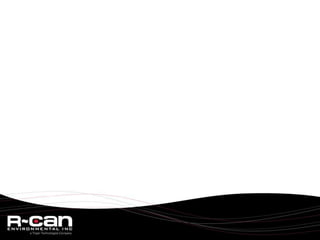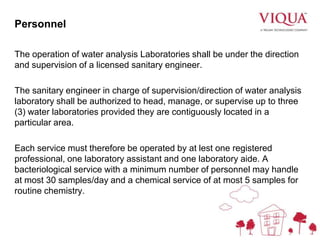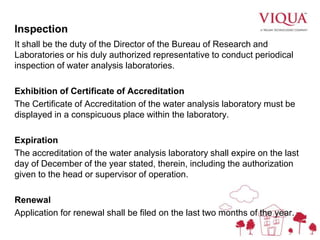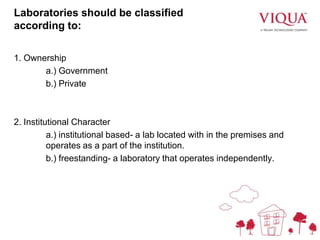This document discusses water analysis and the importance of analyzing water quality. It covers several key points:
1) Water quality can vary significantly depending on its source and environment. Surface water often contains more microorganisms while groundwater contains more dissolved minerals.
2) Water analysis is important to test for substances and organisms that may impact uses of the water or human health. Common tests measure hardness, dissolved solids, turbidity, pH and the presence of contaminants.
3) Several techniques are used to analyze water including filtration to remove solids, distillation to separate analytes from water, and extraction to transfer analytes to solvents. Proper separation is needed to accurately measure target substances.
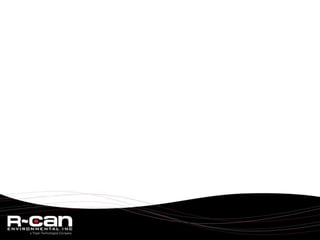



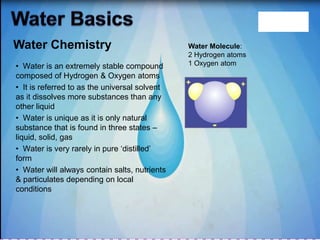



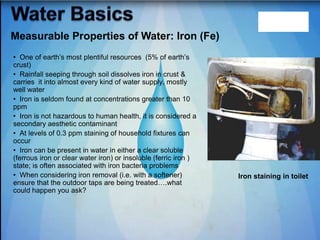
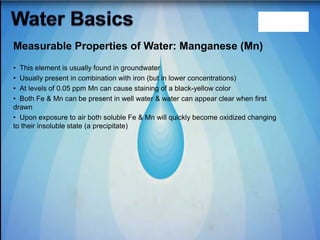






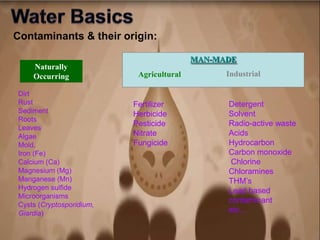


















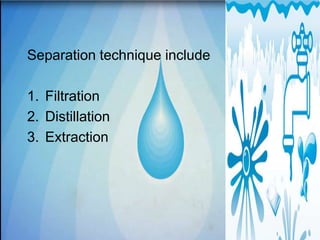



![References
Map from Morton Salt at
http://www.mortonsalt.com/soft/sofisoft.htm
^ a b c World Health Organization Hardness in
Drinking-Water, 2003
^ a b Hermann Weingärtner, "Water" in Ullmann's
Encyclopedia of Industrial
Chemistry, 2006[december], Wiley–VCH, Weinheim.doi:10.1
002/14356007.a28_001
http://www.glendalewaterandpower.com/residents/water_ha
rdnes
http://www.mrwa.com/OPWater%20and%20Impurities.pdf
5/1/2011
3:36:13
PM
40](https://image.slidesharecdn.com/wateranalysis-mtl-140215015445-phpapp021-230315082234-0a603361/85/wateranalysis-mtl-140215015445-phpapp02-1-pdf-40-320.jpg)
